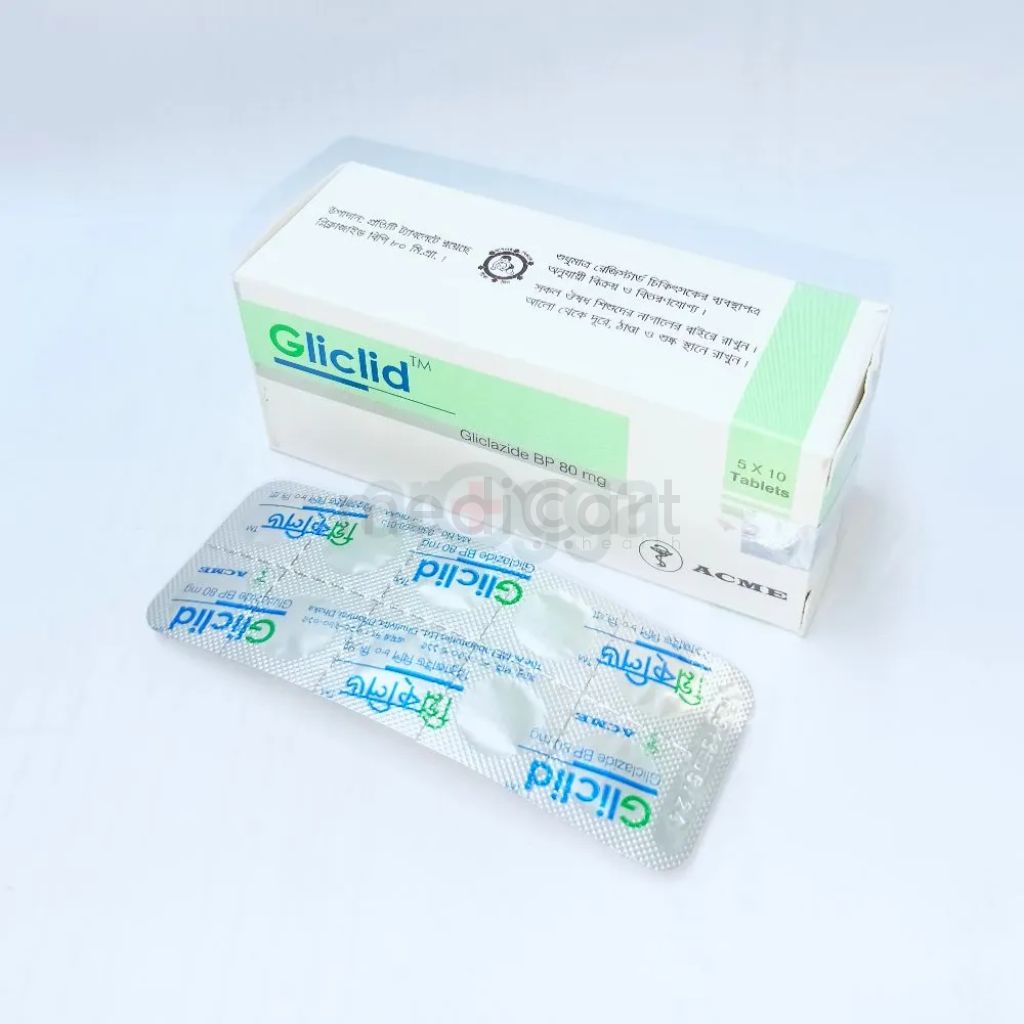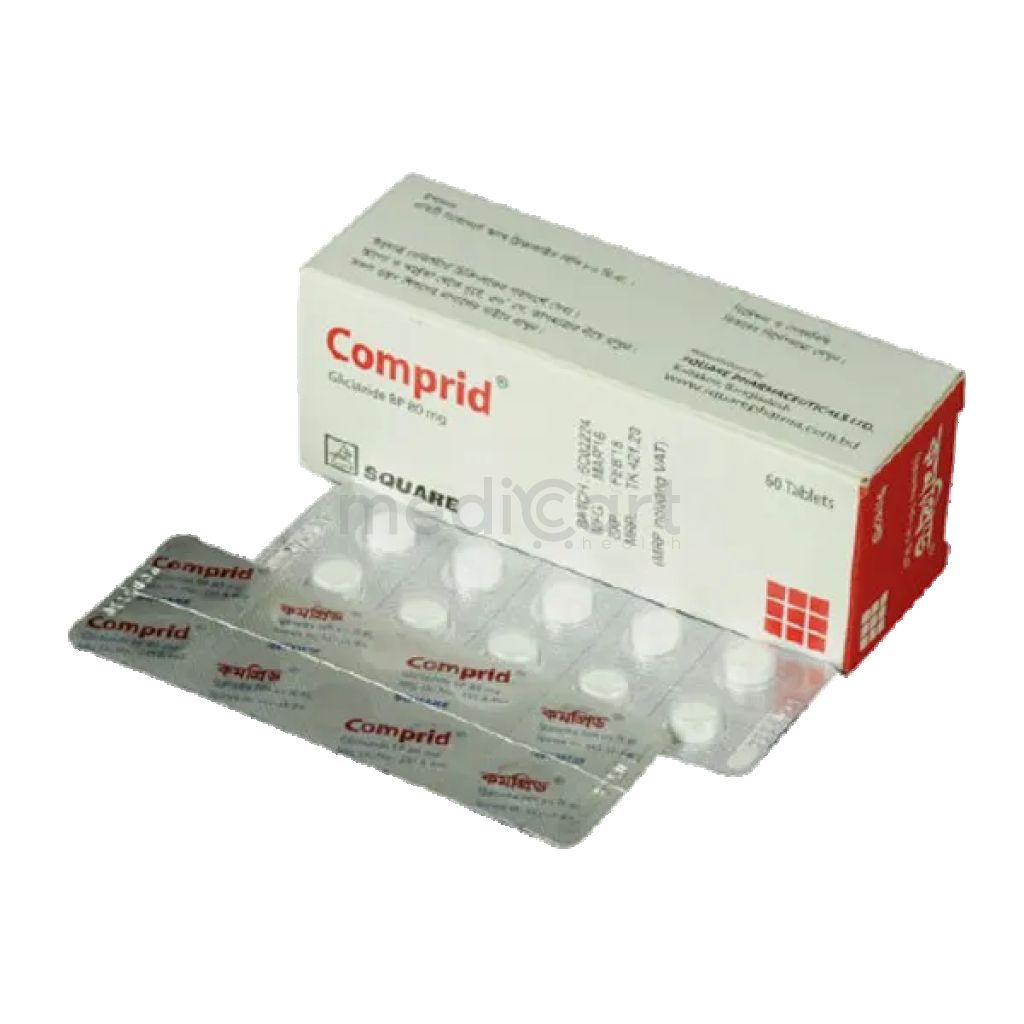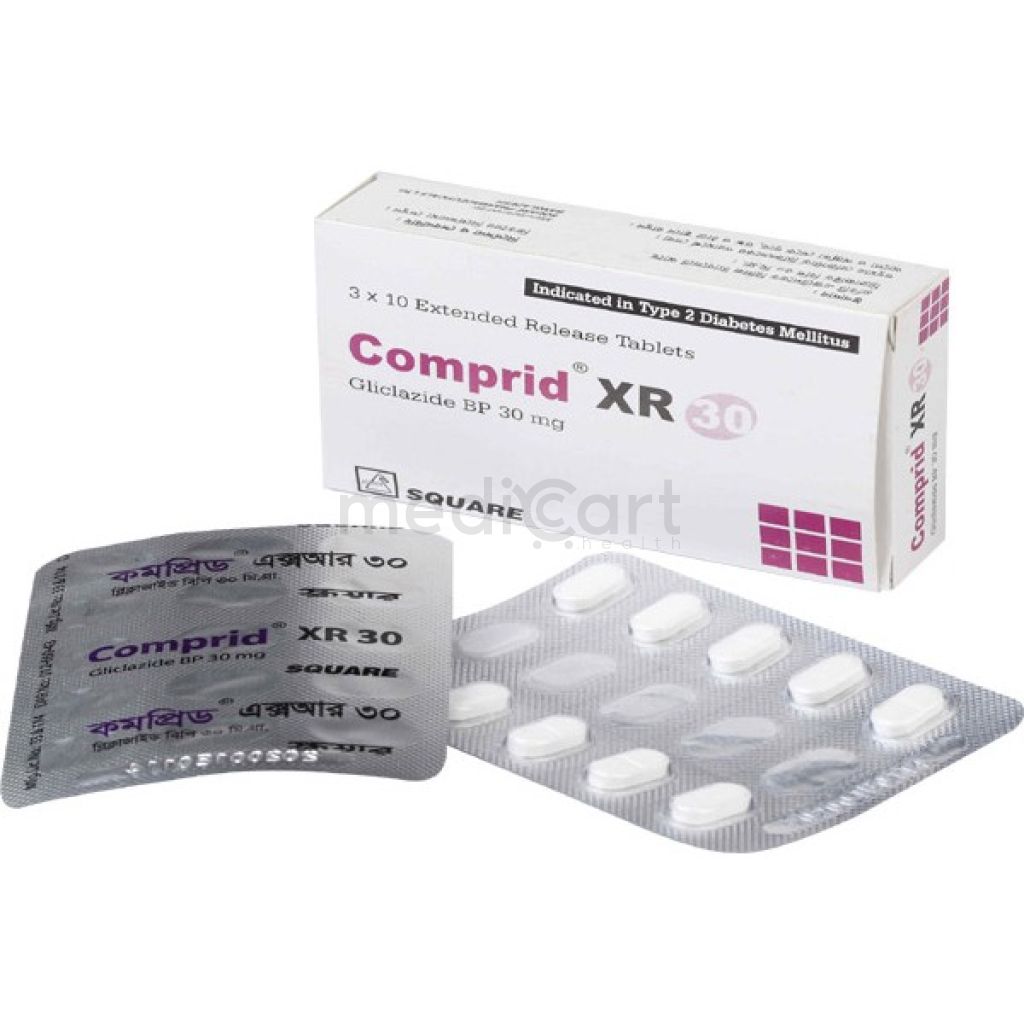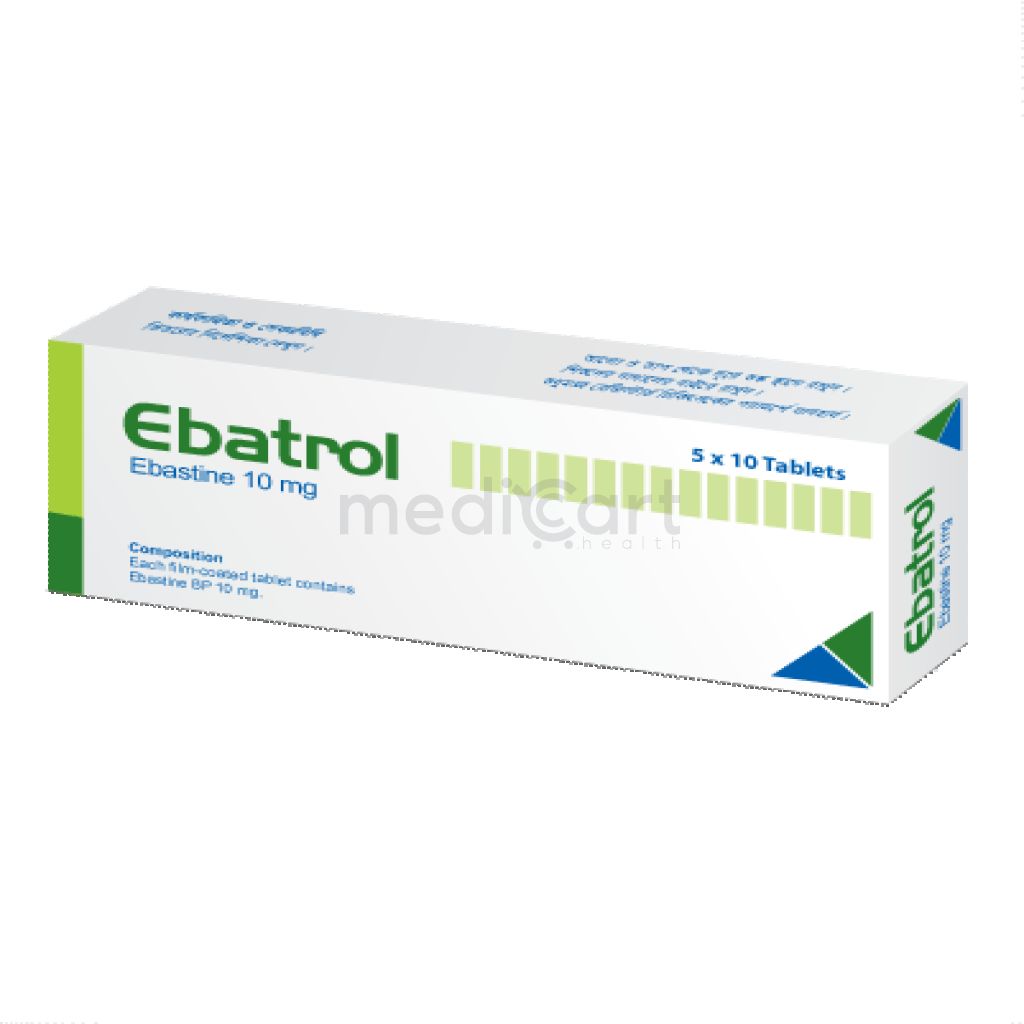

Gliclid 80 mg Tab. 80 mg
Tablet
Pack Size :
10 Tablet x 1 strip
Generics :
Gliclazide
Manufacturer :
Acme Laboratories Ltd.
Best Price *
TK
80.00
* Delivery will be done in Dhaka city only.
Alternative Product
More Information About - Gliclid 80 mg Tab. 80 mg
Description
Generic Name
GliclazidePrecaution
Monitor blood glucose concentration. May require insulin during metabolic stress. Care when transferring from combination therapy. Increased risk of severe hypoglycaemia in elderly, debilitated patients, patients with hepatic or renal impairment. Risk of hypogylcaemia when caloric intake is deficient, after strenuous exercise, when taken with ethanol or when >1 antidiabetic drug is used.Indication
Type 2 DMContra Indication
Type 1 DM, diabetes complicated with ketoacidosis; hypersensitivity; severe renal and hepatic impairment. Pregnancy and lactation.Dose
N/ASide Effect
GI disturbances, skin reaction, leucopenia, thrombocytopenia, agranulocytosis, haemolytic anaemia, cholestatic jaundice, vomiting, diarrhoea, gastritis, increased transaminases.Pregnancy Category
Name : Not Classified
Description
FDA has not yet classified the drug into a specified pregnancy category.Mode of Action
Gliclazide stimulates insulin secretion from pancreatic beta-cells, reduces insulin uptake and glucose output by the liver, and increases insulin sensitivity at peripheral target sites. It decreases microthrombosis by partial inhibition of platelet aggregation and adhesion, and by restoring fibrinolysis w/ an increase in tissue plasminogen activator (t-PA) activity.Interaction
May increase hypoglycaemic effect w/ phenylbutazone. Potentiation of blood glucose lowering effect w/ other antidiabetics (e.g. acarbose, insulins, metformin), beta-blockers, ACE inhibitors, H2-receptor antagonists, MAOIs, sulfonamides, clarithromycin and NSAIDs. Chlorpromazine, glucocorticoids, ritodrine, salbutamol and terbutaline may cause increases in blood glucose levels. May diminish hypoglycaemic effect w/ danazol. May increase anticoagulant effect of warfarin. Potentially Fatal: Increased hypoglycaemic effect w/ miconazolePregnancy Category Note
Pregnancy Available data from a small number of published studies and postmarketing experience in pregnancy over decades have not identified any drug associated risks for major birth defects, miscarriage, or adverse maternal outcomes. However, sulfonylureas (including glimepiride) cross the placenta and have been associated with neonatal adverse reactions such as hypoglycemia; therefore, therapy should be discontinued at least two weeks before expected delivery; poorly controlled diabetes in pregnancy is also associated with risks to mother and fetus Fetal neonatal adverse reactions Neonates of women with gestational diabetes who are treated with sulfonylureas during pregnancy may be at increased risk for neonatal intensive care admission and may develop respiratory distress, hypoglycemia, birth injury, and be large for gestational age; prolonged severe hypoglycemia, lasting 4?10 days, reported in neonates born to mothers receiving a sulfonylurea at time of delivery and has been reported with use of agents with prolonged half-life; observe newborns for symptoms of hypoglycemia and respiratory distress and manage accordingly Dose adjustments during pregnancy and postpartum period Due to reports of prolonged severe hypoglycemia in neonates born to mothers receiving sulfonylurea at time of delivery, therapy should be discontinued at least two weeks before expected delivery Lactation Breastfed infants of lactating women in therapy should be monitored for symptoms of hypoglycemia; not known whether drug is excreted in human milk and there are no data on effects of drug on milk production; drug is present in rat milk; developmental and health benefits of breastfeeding should be considered along with mother's clinical need for drug and any potential adverse effects on breastfed child from drug or from underlying maternal condition Monitor breastfed infants for signs of hypoglycemia (e.g., jitters, cyanosis, apnea, hypothermia, excessive sleepiness, poor feeding, seizures)Adult Dose
Oral Type 2 diabetes mellitus Adult: Initially, 40-80 mg daily gradually increased to 320 mg daily if necessary. Doses >160 mg daily are given in 2 divided doses. Modified-release tab: Initially, 30 mg once daily, may increase in increments of 30 mg up to max 120 mg daily. Interval between doses should be at least 1 mth. For non-respondent patients, dose may be increased after 2 wk.Child Dose
N/ARenal Dose
N/AAdministration
Should be taken 30 mintues before meal or with meal.Disclaimer
The information provided herein are for informational purposes only and not intended to be a substitute for professional medical advice, diagnosis, or treatment. Please note that this information should not be treated as a replacement for physical medical consultation or advice. Great effort has been placed to provide accurate and comprehensive data. However, Medicart along with its authors and editors make no representations or warranties and specifically disclaim all liability for any medical information provided on the site. The absence of any information and/or warning to any drug shall not be considered and assumed as an implied assurance of the Company.









